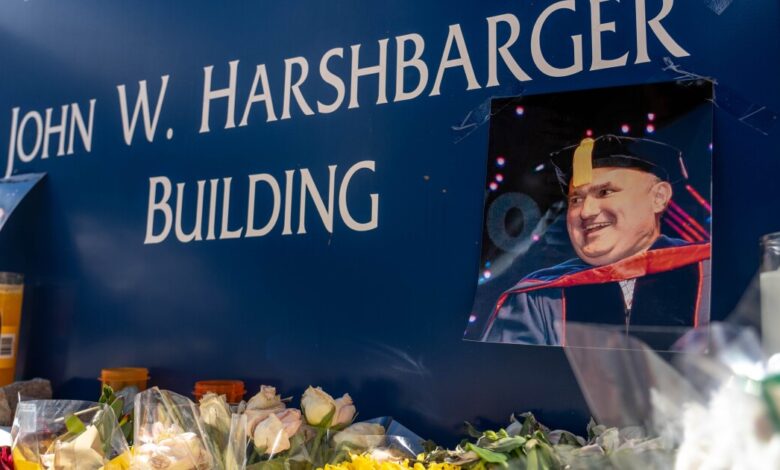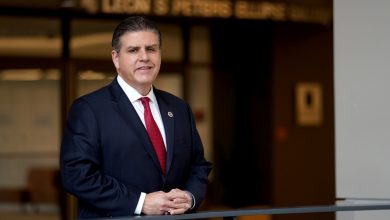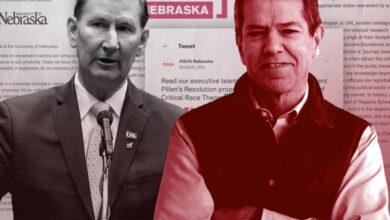A Professor Was Killed While Walking to His Office. Faculty Say It Was an Institutional Failure.

[ad_1]
Almost four months after a former student was charged in the fatal shooting of a University of Arizona professor on campus, an ad-hoc faculty committee has released a 30-page report criticizing the university for failing to act on knowledge about violence risks and for “consciously and consistently” disregarding community members’ safety concerns.
The draft report, released on Wednesday by the General Faculty Committee on University Safety for All, calls the killing a “glaring institutional failure” and urges the university to create a risk-management system for monitoring violent threats.
In a written statement to The Chronicle, Pam Scott, a spokeswoman for the university, said the report “represents the work of a subset of faculty that has reached sweeping conclusions based in large part on misleading characterizations and the selective use of facts and quotations.”
Scott criticized the committee’s decision to share the interim report with the news media before sharing it with other faculty members and the campus community at large. She encouraged people to wait for the conclusion of an independent investigation the university has commissioned from PAX Group LLC.
The investigation “will contain the assessment of experts based on countless hours of interviews and a thorough review of all relevant information and documentation,” Scott said.
On October 5, Thomas Meixner, head of the university’s hydrology and atmospheric-sciences department , was shot and killed in a building while walking from a classroom to his office. Murad Dervish, a former graduate student who had been expelled earlier that year for sending threatening messages to faculty members, was arrested and has been charged with first-degree murder and aggravated assault with a deadly weapon.
After the shooting, faculty members said they had been kept in the dark about the alleged gunman’s red flags under the pretense of compliance with the Family Educational Rights and Privacy Act, which shields some student records from public access. One professor told the Tucson Sentinel that the university had cited privacy policies in refusing to give him information he needed to obtain a protection order against Dervish.
In late October, Leila Hudson, an associate professor in the School of Middle Eastern and North African Studies and chair of the Faculty Senate, assembled the safety committee to analyze how the university handles information about harassment and to offer recommendations for improving its safety protocol.
In compiling its report, the final version of which will be released in the spring, the committee obtained documents and accounts from people with direct knowledge of Dervish’s alleged harassment, including the Meixner family, which provided Thomas Meixner’s emails. Chillingly, Meixner’s records included a “Murad Dervish” folder, containing documentation of the student’s communication with him.
“There were 11 months of calling for help,” and only a limited response from the administration, said Jenny J. Lee, chair of the committee and a professor of educational-policy studies and practice in the College of Education. “As we sum up in the report, there was really no clear action to protect these individuals. These individuals took matters in their own hands.”
The report outlines a detailed timeline of events and appears to reveal new information about how the university handled the suspect’s alleged threats.
The report alleges that Dervish harassed four faculty members in the hydrology and atmospheric-sciences department, a female undergraduate, and a dean-of-students administrator. The victims all contacted the dean of students, the Office of the General Counsel, and the campus police department to report the threats, the report says, but the offices neglected to deal with the harassment.
The female undergraduate, for example, told the committee that Dervish had contacted her at least 30 times from October 2021 to the day of the shooting. She reported his conduct to the Office of Institutional Equity and the dean of students, but the harassment continued, the report says. After two Zoom meetings and five police reports, she met with members of the university’s police department.
“I was literally begging him, ‘Can you give a blanket no-contact order for the department?’ and he said it wasn’t in his power,” the student told the committee. “Then I said, ‘So you are not going to do anything until anyone gets killed, are you?’ And he just looked at me and said nothing and did nothing.”
On September 6, the associate head of the hydrology and atmospheric-sciences department sent an email to university safety officials, reminding them of the threat Dervish posed. Three days later, the campus police department filed a criminal report to the Pima County Attorney’s Office, listing nine counts of threat against a professor in the department and 11 counts of threat against the associate department head, the faculty report says.
The attorney’s office did not review it until after Meixner was killed, the faculty report states, because the criminal report came in a batch with other campus misdemeanors, and the police department did not communicate the report’s urgency to the attorney’s office. In a written statement, Laura Conover, the Pima County attorney, said that “no attempts were made by the law-enforcement agency to link the two cases together, to provide any context, or to bring this to our attention with any sense of urgency.”
The faculty report also states that, on the day of the killing, Dervish sought out four faculty members in the department, but he was able to find only Meixner.
The report also references three unrelated “known violence risks.” The incidents include the harassment of a Daily Wildcat reporter and an incident in which an employee called the police on a Black disabled student, and the committee cited them as evidence that the university is overly focused on compliance with and enforcement of the law and campus policy at the expense of safety.
The report calls Arizona’s lack of a centralized risk-management system a “material institutional failure” and demands the university create a cohesive system to collect and communicate about threats of violence.
From her reading of the report, Hudson, the Faculty Senate chair, said that it seems that the university’s current risk-management apparatus is “overwhelmingly dedicated to warding off perceived legal risk rather than taking seriously the overt, hateful, harassing, intimidating, and ultimately fatal threats of the kind that visited upon the hydrology and atmospheric-sciences department.” She added that she was not pushing for “surveillance” but rather “better administrative risk management and communication.”
Lee, the committee chair, said the loss of trust is going to be an even harder issue to address than the risk-management system.
“If people don’t trust the institution to protect them, let alone to share what ways that they’re feeling threatened,” she said, “it really could undermine the university’s ability to function.”
[ad_2]
Source link






